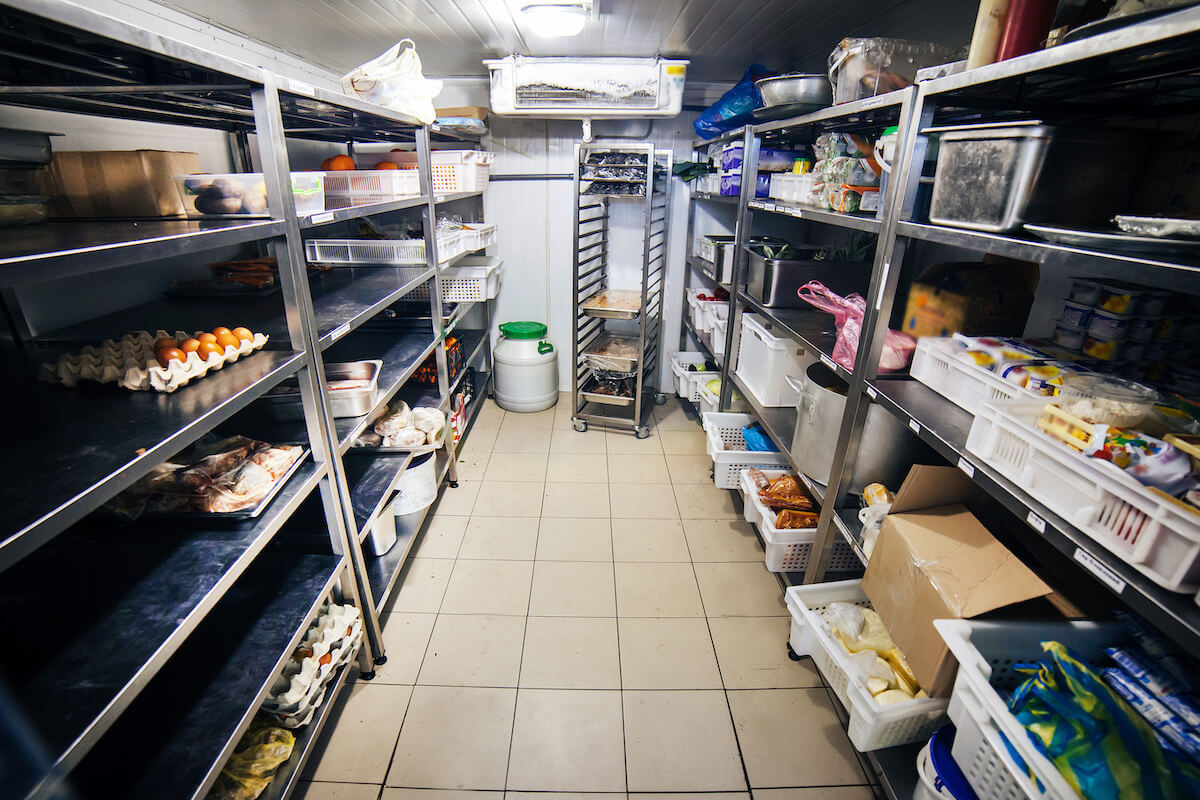4 strategies to keep food costs in restaurants down
Skip the article and turn takeaways into action by scheduling a call with our team.
Keeping down the total food cost in your restaurant is no easy task. Keeping up with food trends, holiday seasons, supply chain issues, and the cost of food can be difficult. Plus, there’s a lot for restaurateurs to keep in mind to continue good working relationships with suppliers and diners.
Being a successful restaurant is all about finding a happy balance while not compromising on the quality of your menu items and the service you provide.
In this article, we’ll share four strategies on how to make food costs in restaurants manageable. The following tips and tricks for restaurant owners can keep profit margins fat even when inflation is high.

4 tips for managing food costs in restaurants
If only restaurant management was just about making mind-blowing food, selling it, and reaping the rewards. Passion aside, you’re running a business, and that means you’ve got to take a look at the numbers from time to time if you want it to grow.
Food costs in restaurants most heavily influence your bottom line. After all, food and beverage sales are the top line item on your restaurant profit and loss statement, while the cost of goods sold – your menu items – have the biggest impact on gross profit.
With so much at stake, here are four tactics on how to make food cost savings in your restaurant.
1. Introduce inventory management

You may not be able to control soaring costs of food or other external factors, but you can start to automate your inventory management to keep your restaurant food cost percentage down by fixing problems at the local level. By comparing your beginning inventory to the cost of goods sold and ending inventory, you can begin to see holes in your inventory management, such as unnecessary food waste or improper logging of stock.
The restaurant industry has a digital trick up its sleeve these days when it comes to food inventory management. Some inventory management software solutions are actually part of an overall restaurant POS system, updating you with notifications when it’s time to stock up on food supplies.
When choosing a restaurant POS, make sure that it integrates with the best front-of-house solution in the industry: Yelp Guest Manager. This means that you now have restaurant inventory software that covers your POS needs and helps streamline the flow of important information from FOH to the kitchen.
2. Decrease portion sizes

If you’re running a nouvelle cuisine restaurant operation, you may want to skip this section as portion sizes are already amongst the smallest in the restaurant business. If not, this simple advice on how to manage food costs in your restaurant could really help with your overall restaurant profit.
To keep food costs down in your restaurant, take a look at the plates coming back from your diners. Are you seeing regular waste? If so, get your staff to create a simple study of which dishes on your restaurant menu are regularly returning unfinished. Then, without changing menu prices, begin to decrease your portion sizes.
If it’s the irregularity of portion sizes that you’re concerned about, educate your back-of-house staff on how to measure out portions correctly. To make sure this knowledge is passed on to new starters, create a kitchen SOP too.
3. Evaluate the source

The bottom line is that no matter how much we try to fix our problems internally, it’s who we buy our food from that controls the food prices and really determines if we can run a profitable restaurant. To improve food cost control in your restaurant, you may have to begin looking elsewhere.
To get closer to your target food cost, you could try joining a cooperative. This is a purchasing group of restaurants that give independent restaurants more buying power, lowering your average food cost. By combining forces with other local restaurants using the same type of food, you can enjoy a lower food cost as you’re buying in bulk, just like the big chains do.
Convenience can be a curse, and we all know that change is initially difficult. You may have been with your current vendor for some time, but their prices may be sinking you. Start looking around for other options, and if you find a vendor that’s cheaper, get a quote. If you feel ready to move on, do it; if not, show the quote to your current vendor and see if you can get a discount. Instant savings with zero hassle.
4. Change up your menu

Menu engineering isn’t half as complicated as it sounds. To get closer to that ideal food cost in your restaurant, you’ve got to start making some changes to your menu.
If you’re fortunate enough to have a restaurant POS, you should be able to obtain analytics detailing sales over set periods. If it has an inventory management system built in, you will be able to see the actual food cost of every menu item. You can then compare this information to the popularity of certain dishes, and you’ll soon know what’s got to stay and what has to go.
It’s not always as drastic as cutting dishes, though. You can revise dishes by analyzing the cost of ingredients and asking your chef to find cheaper replacement ingredients. You can also change portion sizes or raise the cost of the item on the menu.
Changing your menu also gives you a good chance to reevaluate your menu design, whether you want to rebrand or just give your restaurant a fresher look. If you do find dishes that are becoming a financial drain, it’s a great opportunity to encourage your chef to come up with new and exciting dishes. You can liven up a tired menu and maybe even increase your sales.
Take control of food costs in your restaurant

Keeping your food costs down in your restaurant isn’t something you need to do over an allocated time period. You’ve got to analyze as often as you can to keep on top of changes that could cause future problems.
Remember that inventory management is a huge part of keeping track of food costs in restaurants, and using digital software solutions really helps to take the hard work out of it too. If you’re wasting food, see if changing your portion sizes is a viable solution—chances are most diners won’t even notice.
Consider joining a cooperative or changing your vendor if you want to reduce how much you’re paying for food. Menu engineering gives you creative freedom that could make changes bigger than you initially expected.
Some of the POS systems that we mentioned before integrate with Yelp’s restaurant tech solution. Take charge of your front-of-house management and improve your customer’s experience with Yelp Guest Manager. This software supports your team by handling reservations and waitlists, allowing customers to check themselves in, and much more.
Reach out to us and get a demo. Restaurants that start using Guest Manager experience up to 2X the traffic on their Yelp Business Page.*